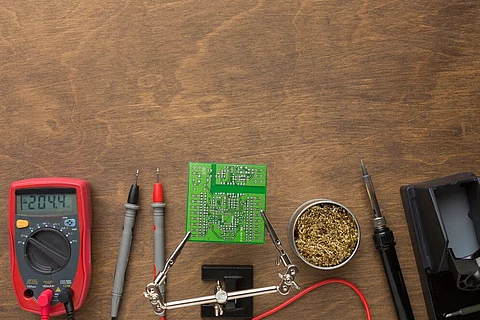

In some ways, the very term “voltage divider” explains itself. It refers to a simple, passive circuit in which multiple resistors are used in order to divide a supply voltage across the resistors, which are connected in series.
When it comes to cornerstone concepts in modern electronics, they really don’t come more “cornerstone” than voltage dividers.
Still, it might not be entirely clear to you in what contexts a voltage divider may be needed, or what calculations underpin them. So, let’s start from the very beginning.
The idea behind the type of circuit known as a voltage divider, is to reduce an input voltage from a higher level to a lower one. When two resistors are connected in series across a voltage source, an output voltage can be created that is greatly reduced from the input voltage.
There are various common applications for voltage dividers, such as:
Potential measurement: there might sometimes be a need to measure a voltage that is too high for a given instrument. The use of a voltage divider in such circumstances can allow the voltage to be scaled down to a safe and readable level.
Biasing transistors: voltage dividers are used in transistor amplifier circuits to set the base voltage. This is a way of ensuring the transistor operates in its desired region.
Sensor interfacing: the outputs of many sensors might need to be scaled before it is possible for analogue-to-digital converters (ADCs) to read them. A voltage divider can make this possible.
Impedance matching: in a radio frequency (RF) circuit, signal reflections can occur due to impedance mismatches. Voltage dividers can be greatly useful for helping to match impendances.
Adjustable voltage supply: a voltage divider configuration having a potentiometer – a three-terminal variable resistor – incorporated into it, can allow for an adjustable voltage source, as can be vital for tunable circuits.
If you’re looking to calculate the output voltage of a potential divider, this can be done using the formula Vout = Vin * (R2 / (R1 + R2)).
In this calculation, Vin is the input voltage, and R1 and R2 are the resistance readings of the first and second resistor, respectively.
The short answer to this question is: yes! The electrical components supplier RS Online, for instance, presents an online voltage divider calculator for electronics design projects.
When this calculator is used, values simply need to be provided for input voltage and for each resistor. Inputting this information allows for the output voltage to be quickly displayed.
It is important to be mindful that voltage dividers are not great for high-current loads; they lend themselves well to low-current signals, instead of power delivery.
Nonetheless, presuming it is low-signal work you are doing, you are likely to be greatly thankful for the useful role that voltage dividers can play in your electronics projects.
Voltage dividers may be a form of relatively “old-school” electronics, but they remain highly pertinent in the context of the 2020s.
